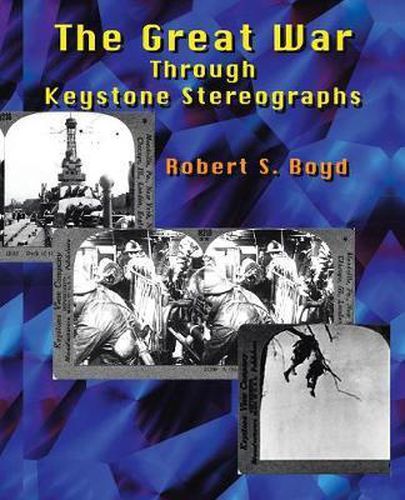Readings Newsletter
Become a Readings Member to make your shopping experience even easier.
Sign in or sign up for free!
You’re not far away from qualifying for FREE standard shipping within Australia
You’ve qualified for FREE standard shipping within Australia
The cart is loading…






This title is printed to order. This book may have been self-published. If so, we cannot guarantee the quality of the content. In the main most books will have gone through the editing process however some may not. We therefore suggest that you be aware of this before ordering this book. If in doubt check either the author or publisher’s details as we are unable to accept any returns unless they are faulty. Please contact us if you have any questions.
World War I stereoview sets remained popular for many years after the war ended. In the United States, the most commonly encountered World War I stereographs were produced by four companies: Keystone View Company, Underwood & Underwood, and W.E. Troutman of this country, and Realistic Travels of England. Of those four, Keystone was the largest and in business the longest time. It produced over 800 war stereographs, most a part of one or more of the seven principle war sets. The Great War Through Keystone Stereographs describes these sets from the first one in 1915 to the last one in 1932. It includes photos of over 120 stereoviews and complete title lists for each set.
While Keystone stereoviews are the most common in this country, not all Keystone cards are common. . The Great War Through Keystone Stereographs provides for the first time a sound basis for estimating their market value. Anyone who looks at Keystone war stereographs card on eBay will find that dealers and collectors alike betray considerable ignorance of their scarcity, with common cards being offered (and purchased) at $25.00 and rare cards and sets going for a song. As we approach the centennial of the Great War, stereocards about it are likely to become increasingly popular. The collector who owns this book will avoid overpaying and will be able to find bargains.
. The Great War Through Keystone Stereographs is far more than a catalog. The chapters on each set offer serious students of the war and photography insight into Keystone’s editorial decisions as they continually tried to improve the quality of their coverage of the Great War. It also establishes previous unknown links among producers of stereographs of the period and makes sense of the baffling number patterns apparent in any group of cards. It is an indispensable a reference to historians and dealers.
$9.00 standard shipping within Australia
FREE standard shipping within Australia for orders over $100.00
Express & International shipping calculated at checkout
This title is printed to order. This book may have been self-published. If so, we cannot guarantee the quality of the content. In the main most books will have gone through the editing process however some may not. We therefore suggest that you be aware of this before ordering this book. If in doubt check either the author or publisher’s details as we are unable to accept any returns unless they are faulty. Please contact us if you have any questions.
World War I stereoview sets remained popular for many years after the war ended. In the United States, the most commonly encountered World War I stereographs were produced by four companies: Keystone View Company, Underwood & Underwood, and W.E. Troutman of this country, and Realistic Travels of England. Of those four, Keystone was the largest and in business the longest time. It produced over 800 war stereographs, most a part of one or more of the seven principle war sets. The Great War Through Keystone Stereographs describes these sets from the first one in 1915 to the last one in 1932. It includes photos of over 120 stereoviews and complete title lists for each set.
While Keystone stereoviews are the most common in this country, not all Keystone cards are common. . The Great War Through Keystone Stereographs provides for the first time a sound basis for estimating their market value. Anyone who looks at Keystone war stereographs card on eBay will find that dealers and collectors alike betray considerable ignorance of their scarcity, with common cards being offered (and purchased) at $25.00 and rare cards and sets going for a song. As we approach the centennial of the Great War, stereocards about it are likely to become increasingly popular. The collector who owns this book will avoid overpaying and will be able to find bargains.
. The Great War Through Keystone Stereographs is far more than a catalog. The chapters on each set offer serious students of the war and photography insight into Keystone’s editorial decisions as they continually tried to improve the quality of their coverage of the Great War. It also establishes previous unknown links among producers of stereographs of the period and makes sense of the baffling number patterns apparent in any group of cards. It is an indispensable a reference to historians and dealers.